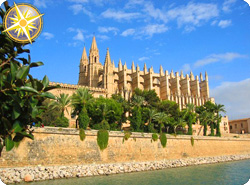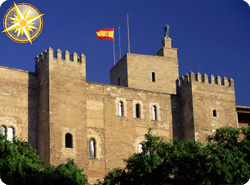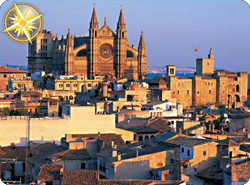Pollensa plays a leading role in the Mallorca's cultural life. From the earliest years of the 20th century, Pollensa became a favourite place for painters visiting the island. Names like Miquel Costa i Llobera, Ramon Picó i Campamar, Santiago Russinyol, Joaquim Mir, Anglada Camarasa, and many others, have contributed with their works, both literature and painting, into making Pollensa well known both inside and outside Mallorca. An outstanding feature of Pollensa's cultural image is the Festival of Classical Music, which has been held annually in the cloisters of Sant Domingo in the months of July and August since 1961. During its 40 years of uninterrupted existence and constant evolution, festival goers have been able to listen to Mstislav Rostropovich, Jessye Norman, Alban Berg Quartett, Montserrat Caballé and the National Orchestra of France with Lorin Maazel.
The Pollensa Festival, presided over by Her Majesty Queen Sofia, has been a part of the European Association of Festivals for many years.
Mallorca enjoys typical Mediterranean weather, with mild winters and hot summers. During the months of July and August, the weather is hot and beautifully sunny, boasting around 11 hours of sun daily. During the winter, the weather can get chilly, but generally, fine, mild weather can be expected most days.
Historical Mallorca
The Church of Nostra Senyora del Roser hosts a baroque altarpiece from 1651 and a sculpture of the Virgin dating from the 13th to 14th centuries.
The Calvari and the Roman Bridge is a home to the image of the Mare de Déu de la Creu (Virgin of the Foot of the Cross), created with a single piece of stone and attributed to the 13th or 14th centuries.
There are many viewing points from which to enjoy the geographical layout of Pollensa. From here, descending along Creus and Gruat streets, you will arrive at the Roman Bridge. This is possibly a military construction from the first centuries AD, built to carry water to the Roman city of Pollentia (Alcúdia). A monument of historical and artistic interest.
The Puig de Maria Sanctuary is situated at a height of 330 metres at the bottom of the town, with chapel, refectory, tower and walls. All were constructed between the ends of the 14th and 15th centuries. El Castell del Rei (Kings Castle) holds a strategic position, possibly of Moorish construction, built on the site of an earlier building. The last bastion of the King of Majorca (1343). The Sant Vicenç prehistoric caves at Cala Bóquer are situated at the foot of the Tramuntana range, important navicular constructions from the Talayotic period have been found and the origins of the pre-Roman city of Bocchoris. The site is approximately 3000 years old. Close to the path is a small spring of drinking water. This area is also of great ornithological interest. Among plant species can be found palmetto and a number of orchids (Orchis).



